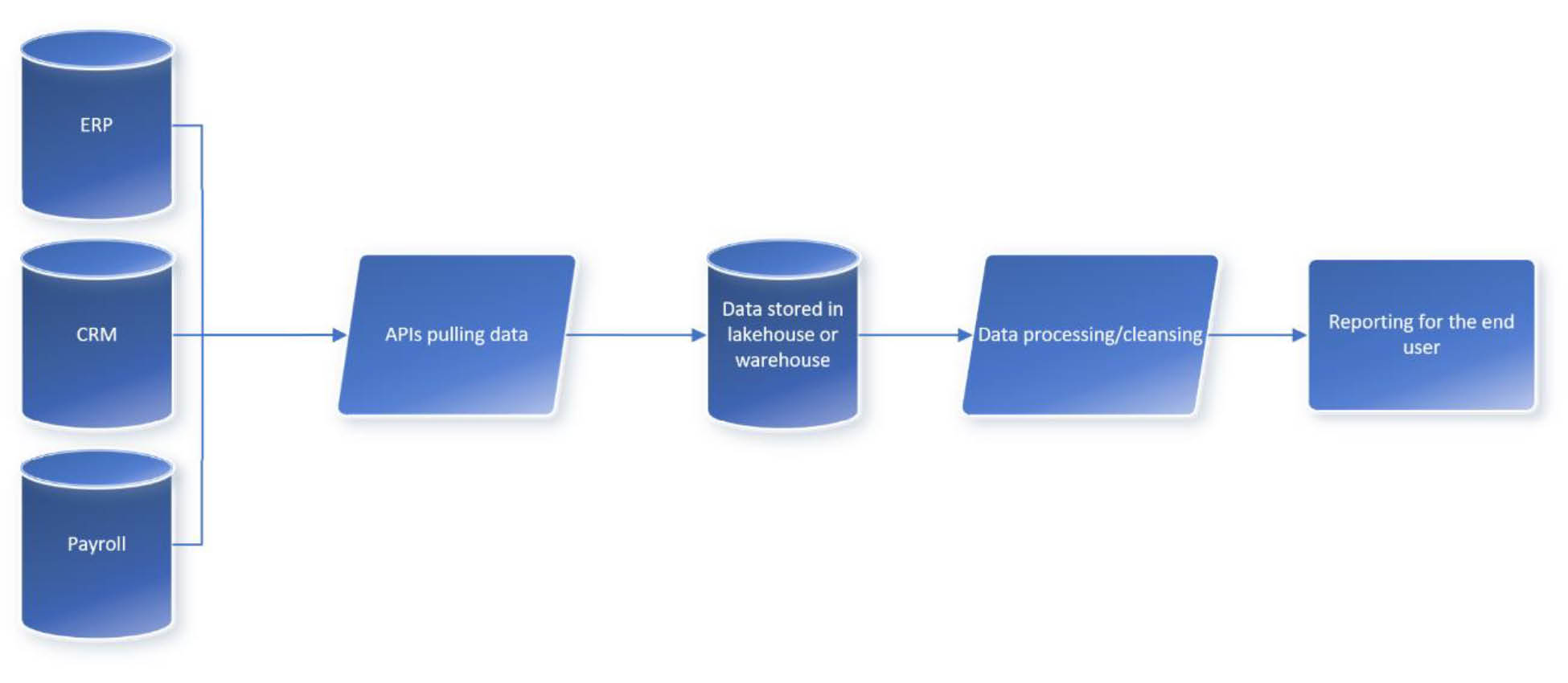
In today’s fast-paced digital business environment, tax departments are under increased pressure to deliver accurate, timely, and compliant financial information. The complexity and the ever-evolving nature of tax regulations, coupled with the growing volume of data that organizations generate, present a significant challenge. Tax professionals must not only ensure compliance but also contribute strategic insights that drive business value.
One of the most pressing issues facing in-house tax departments is the bottleneck created by inefficient data availability and transfer processes. Traditional methods of data collection and storage are often fragmented, relying on manual processes and disparate systems. This fragmentation leads to delays, an increased risk of errors, and reduced capacity for strategic analysis.
Properly implementing structured data storage and automated data pipelines can revolutionize the operations of in-house tax departments. By using application programming interfaces (APIs) to feed data into modern data architectures like data warehouses and data lakehouses, tax teams can enhance audit defenses, improve organizational efficiency, and significantly boost productivity. Implementing these technologies not only streamlines data flow but also reduces manual errors, improves data accuracy, and allows tax professionals to focus on higher-value strategic tasks.
The Tax Data Bottleneck
Tax departments often grapple with the challenge of accessing the right data at the right time. Data required for tax calculations, compliance/provision reporting, and strategic planning is typically scattered across multiple systems and departments within an organization. This fragmentation leads to delays in data retrieval, increased risk of errors, and a reliance on manual processes that are both time consuming and prone to mistakes.
Moreover, data is often stored in silos across different departments or systems that do not communicate effectively. This lack of integration means that tax professionals may have to manually compile data from various sources, increasing the likelihood of errors and inconsistencies. The time spent on data collection reduces the time available for analysis and strategic planning.
The Importance of Structured and Accessible Data Storage
Storing collected data in an unstructured or poorly organized manner compounds problems. Unstructured data storage methods—scattered spreadsheets, ad hoc databases, and locally saved information—make it difficult to retrieve and analyze information efficiently. Without a centralized, structured data storage system, tax professionals spend valuable time sifting through disparate data sources, reconciling inconsistencies, and verifying the accuracy of information. Additional challenges include maintaining data integrity, ensuring version control, facilitating collaboration among team members, and potentially duplicating efforts. These inefficiencies slow down operations and expose the organization to risks during audits due to potential inaccuracies or lack of data traceability.
In addition, global regulatory requirements mandate that organizations maintain accurate records with clear data lineage. Unstructured data storage complicates compliance efforts since tracing the origins of and modifications to data becomes a cumbersome task.
Using Structured Data Architectures to Streamline Tax Operations
To address these challenges, implementing a robust data architecture that facilitates structured data storage and automated data pipelines is essential. Here are some ways to strengthen an organization’s data architecture.
Building Effective Data Layers
- A modern data architecture comprises multiple layers that organize data flow from source systems to end users. These layers typically include:
- a data ingestion layer: automates the collection of data from various internal and external sources, handling different data formats and protocols;
- a data storage layer: centralizes data in a repository designed for scalability and performance, such as a data warehouse or lakehouse;
- a data processing layer: applies data transformation, cleansing, and enrichment processes to ensure data quality and consistency; and
- a data access layer: provides secure and user-friendly access to data through tools and interfaces tailored to the needs of tax professionals.
Additional data layers may be included as needed, such as layers that account for workflow, analytics, metadata, and security. This layered approach facilitates scalability, allowing the data architecture to grow with the organization’s needs.
Automating API Calls for Seamless Data Flow
An API is a software intermediary that enables different software applications to communicate and exchange data with each other seamlessly. APIs play a crucial role in automating the data ingestion process. By establishing automated API calls, data from source systems can be continuously fed into the data storage layer without manual intervention. This automation ensures that the data is up-to-date and reduces the risk of human error. Automated API calls allow organizations to establish real-time or scheduled data feeds from source systems into the data storage layer. This automation minimizes errors and ensures that tax departments have access to the most current data available.
For example, integrating enterprise resource planning (ERP) systems, tax and financial software, and other operational systems through APIs ensures that all relevant data is captured promptly. This integration is crucial for compliance with tax regulations that require timely reporting and accurate recordkeeping.
Data Warehouses and Lakehouses
A data warehouse is designed to store structured data. It organizes data into predefined schemas and supports complex queries and reporting. Data warehouses are ideal for handling large volumes of historical data used in business intelligence and decision-making.
The data lakehouse, an emerging data management architecture, is an evolution of the data warehouse and data lake environments. Data lakehouses can store both structured and unstructured data, supporting a wide range of data types and analytics workloads. The lakehouse architecture provides the flexibility to perform advanced analytics, machine learning, and real-time processing.
Solutions When Resources Are Limited
Not all organizations have the resources to build and maintain their own data warehouse or lakehouse. However, this lack doesn’t have to preclude their reaping the benefits of structured data storage. Here are some less expensive options.
Enabling Organizational Shift
An organizational shift might involve reprioritizing investments toward data infrastructure or adopting cloud-based solutions that are scalable and cost-effective. Cloud platforms like AWS, Microsoft Azure, and Google Cloud Platform provide data warehousing and lakehouse services by subscription, reducing up-front costs and infrastructure management burdens.
By emphasizing the importance of data architecture, organizations can make incremental changes toward improved data management. This may include training staff, reallocating budgets, or phasing in new technologies over time.
Using Existing In-house Data Environments
Tax departments can collaborate with other internal teams, such as IT, data analytics, or finance departments, in using existing data environments. By integrating into the organization’s broader data strategy, tax professionals can access necessary data without duplicating efforts or incurring additional costs.

This collaboration helps foster a more cohesive data culture within the organization and ensures that tax departments are aligned with overall business objectives. It also allows tax professionals to benefit from the expertise and infrastructure already in place. Figure 1 shows how a company with multiple source systems can benefit from a common data storage system that the tax department can leverage.
Transforming Tax Departments: The Benefits of Automated Data Pipelines
Structured data storage and automated pipelines offer numerous advantages, including:
- Better audit defense capabilities. Having structured and accessible data enables better audit defense by providing clear data lineage and traceability. Auditors can easily verify the accuracy of financial records, reducing the time and resources spent on audits. This transparency builds trust with regulatory bodies and can lead to smoother audits.
- Operational efficiencies. Examples include:
- Optimizing resource allocation. Automated data pipelines free up human resources by eliminating manual data collection and entry. Tax professionals can redirect their efforts toward analysis and strategy. This optimization leads to better use of talent within the organization; and
- Focusing on value-added tasks. With accurate and timely data input, tax departments can engage in higher-value activities such as tax planning, risk assessment, and advising on business decisions. This shift increases the overall value the tax department brings to the organization, transforming it from a cost center to a strategic partner.
- Monetary savings. Reducing manual processes and improving data accuracy can lead to significant savings. Organizations can save on labor costs, minimize the risk of financial penalties due to noncompliance, and optimize tax liabilities through better planning. The return on investment in data infrastructure can be substantial over time.
- Improved data accuracy. Automation reduces the risk of errors inherent in manual data handling. Accurate data ensures compliance with tax regulations and improves the quality of financial reporting. This precision is crucial to avoid costly mistakes that could lead to financial restatements or regulatory fines.
- Increased data visibility. Centralized data storage enhances the ability to see into financial operations. Tax departments can generate real-time reports, monitor tax positions, and make informed decisions promptly. Enhanced visibility supports better forecasting, strategic planning, and aligns tax strategies with overall business goals.
Real-World Examples
Consider a multinational corporation that has faced significant delays during tax audits due to disorganized data. After implementing a data warehouse with automated data feeds, the company has reduced audit preparation time by fifty percent, enabling it to focus on strategic tax planning.
Or consider a midsized manufacturing company that struggles with lengthy tax reporting processes due to disjointed data systems. After implementing an automated data pipeline feeding into a cloud-based data warehouse, the company has reduced its tax reporting cycle from weeks to days. The tax team can now focus on analyzing tax positions rather than gathering data.
Conclusion
The bottleneck of inefficient data storage and transfer poses a significant challenge for tax departments, hindering their ability to perform effectively and increasing organizational risk. Traditional data management methods are no longer sufficient in a world that demands agility, accuracy, and compliance.
By harnessing structured data storage and automated pipelines, tax departments can overcome these challenges. Implementing data warehouses or lakehouses, leveraging automated API calls, and collaborating across departments can transform tax operations. The result is enhanced audit defense, improved efficiency, cost savings, and the ability to focus on strategic, value-added tasks.
Mark Pociask is a managing director in the tax digital consulting practice, and Cole Rein is a senior associate, both at Grant Thornton Advisors LLC.



